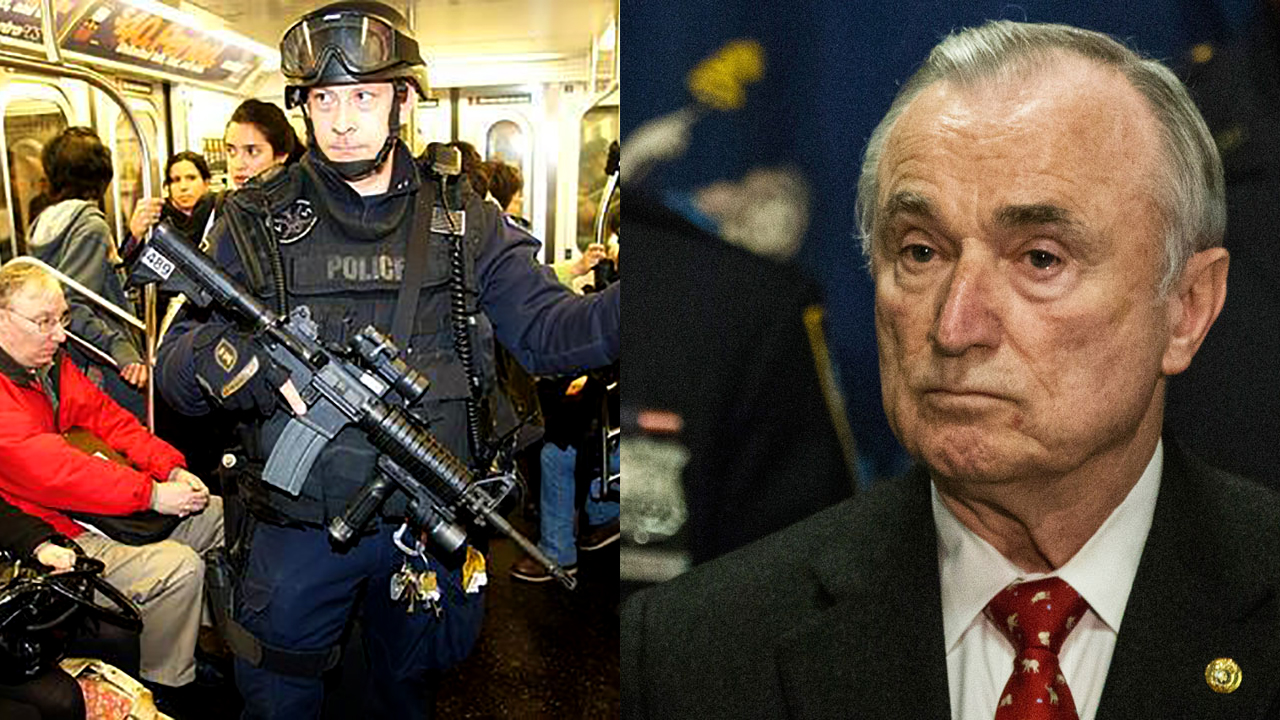As citywide protests have calmed down and the intense focus on the NYPD has begun to lift, Police Commissioner Bill Bratton has announced two ways that he plans to push forward controversial policies.
The most immediately ominous initiative is a plan for, in Bratton’s words, a “new patrol model for how we deploy resources.” This new patrol model includes 350 officers to be assigned rifles and machine guns which they will carry on duty at all times. The commissioner is pulling every politician’s favorite blank check to justify this militarization of the city; he claims it’s about terrorism. But according to Capital, “These officers will also be used to assist on crime scenes, and help with crowd control and other large-scale events.”
We certainly hope crowd control doesn’t mean walking into protests with machine guns because the Ferguson demonstrations made it pretty clear that when it comes to de-escalation, big scary weapons aren’t very effective.
We also hope the NYPD is getting some target practice because if its past record is any indication, pulling out machine guns in a crowded area isn’t going to end well. Consider the incident in 2012 when police hit 9 bystanders while trying to shoot a 58-year-old gunman outside the Empire State Building. Or maybe think about the time they shot two bystanders when they opened fire on an unarmed man in Times Square. While all guns are dangerous, an AR-15 can fire 700 rounds a minute.
Bratton’s second announcement is a plan to begin implementing his grand vision of “Predictive Policing” which is a sort of amped up version of the broken windows theory. The commissioner plans to use statistical data and computer analysis in real time to help cops know where they need to be before they need to be there. Most likely it will just mean more poor people, in poor neighborhoods being given low-level summonses that they can’t afford. Forbes analyses of predictive policing sums it up well:
This combination of predictive tools that direct officers into certain neighborhoods backed by an increasing number of channels to surveil those who live in areas predetermined to be criminal is not new, but an extension of a pathology of law enforcement that assumes a criminal pretext by its mere presence in a community. It’s not predictive policing that makes this phenomenon possible, but it takes it one step further toward being totally irrefutable, secured by computer objectivity that further distances people from any direct power within the structures around them.
The commissioner calls these plans, “new, creative types of police work.” The necessity for mending the NYPD’s relationship with the community is certainly going to require some creative thinking but machine guns and assuming people are guilty of crimes just sounds like more of the same.
(Photo: Getty)



